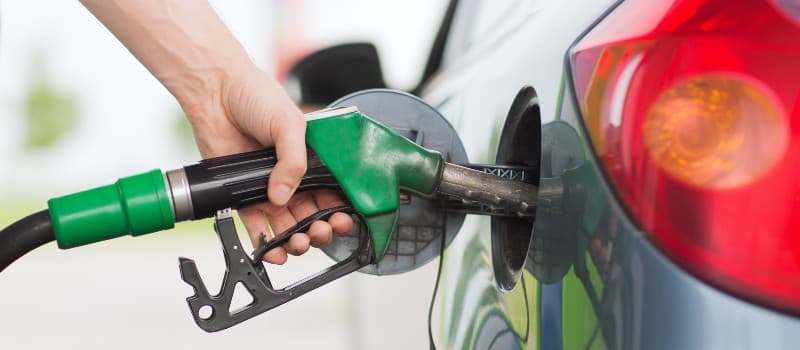
4 handy fuel saving tips… that don’t actually work
22nd Jul, 2022
By now, you don’t need us to tell you about skyrocketing fuel prices – they’ve been making headlines for what seems like an eternity. So it’s no surprise that so many drivers up and down the country are experimenting with fuel saving techniques. Some are reasonably effective, whereas some are less so, and a few can even be downright dangerous. When you’ve set out to save yourself a few bob at the pumps, you never want to end the afternoon thinking; I need to scrap my car.
So, if you’re on the lookout for ways to save yourself on fuel costs, here are four techniques you know that you can safely skip over.
Coasting
OK, so right off the bat this is one that’s specifically advised against by the Highway Code (Rule 122, in case you were wondering). To be honest, it’s a pretty good bet that your driving instructor mentioned it too. In case you need a refresher, coasting basically involves travelling in neutral or with the clutched pressed down, which means the car remains moving forward without being in gear.
The thing is though, this isn’t actually saving you anything, as fuel is still being delivered to the engine. And as well as being ineffective, it’s also highly dangerous. How? Well, take your pick. Engine braking is eliminated, which means you can pick up some serious uncontrolled speed if you start travelling downhill. It’s also far more difficult to keep the car in control when you’re taking corners, and as the cherry on the cake it can even end up increasing wear on your foot brakes – so yes, it’s actually costing you more money in the long term. There’s a reason you’ve probably spent your entire driving career not doing it!
Drafting, or slipstreaming
Two names, same thing. This is a technique that’s used to great effect on professional racetracks – basically, it involves two or more cars driving virtually bumper-to-bumper. In doing so, they can theoretically achieve higher top speeds with less fuel consumption. The lead car leaves an area of low pressure behind it, so that the car behind enjoys less aerodynamic resistance. That allows the second car to get closer to the lead car, which pushes the high-pressure air forward. The fast-moving air hits the lead car’s spoiler, reducing drag in turn, and allowing it to get a little bit of a boost, so everyone achieves a bit more fuel efficiency.
Now, you’ll note that there are so, so many reasons why this isn’t an applicable technique to public highways. For starters, there’s a very slim chance that your car is equipped with a spoiler, so there’s that. Even if it is though, the police (and the public) obviously don’t take kindly to people treating motorways as racetracks.
Let’s be honest, going bumper-to-bumper on a highway has another more common name; tailgating. And it doesn’t matter if driver of the lead vehicle is aware of it or even actively participating, the dangers just are the same. Public roads are unpredictable, and if the lead car suddenly has to react to an obstacle, there’s a good chance that the vehicle behind is going to cannon straight into it. The potential fuel savings involved will look particularly paltry if the entire technique means you’ll end up having to scrap your car.
Over-inflating your tyres
There’s no question that keeping tyres inflated to the correct level is great for safety. It helps them to maintain their grip on the road, and ensures they keep their structural integrity. But as for improving fuel efficiency? To be honest, it’s dubious.
Notably, some tyre manufacturers have claimed that a drop of just 5psi could mean a rise in 10% more fuel consumption. However, Which? tested a Peugeot 308 and found that deflating the tyres by 15psi resulted in just a 3% rise in fuel consumption.
So if you ever hear of anyone telling you to over-inflate your tyres, you can safely ignore them. At best, it’s pointless, and at worst, it’s dangerous. Tyre manufacturers set those recommended figures for a reason!
Reducing weight
This is not technically incorrect as such – removing miscellaneous stuff from your car can indeed improve fuel efficiency – but its benefits are often overblown. Now, removing heavy stuff from your car is definitely going to have an effect on your car’s fuel efficiency, but these things have to be on a relatively big scale to make a dent; we’re talking stuff like suitcases, tools, equipment, or even passengers. (Maybe Grandma will just have to walk.)
Anything much smaller than that though is probably not going to make much of a difference. Clearing your car of paper cups, lunchboxes, toys, bags and food or drink probably won’t save you much at the pump. (It’s very satisfying though, so may be well worth doing!)
They might all seem like easy, creative fixes, but the annoying truth is that they’re probably not going to make as much of a difference as the more boring stuff like driving sensibly, combining journeys where you can, and planning your route. We’ll expand more on stuff like that in our next post though!
In the meantime, if you’ve decided that your car is simply becoming too uneconomical to run, that’s exactly where we can help here at Scrap Car Network. You can count on us to give you the best price for your scrap car – all you need to do is enter your car reg and postcode into the fields on our site, and we’ll get you an instant online quote before you can say cash for cars.
It only takes a few seconds. Curious to find out how much yours is worth?